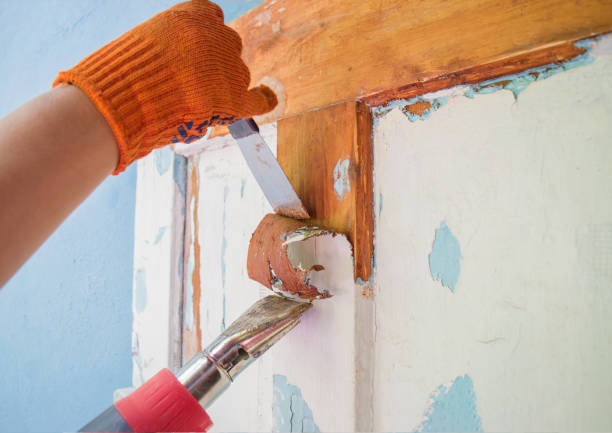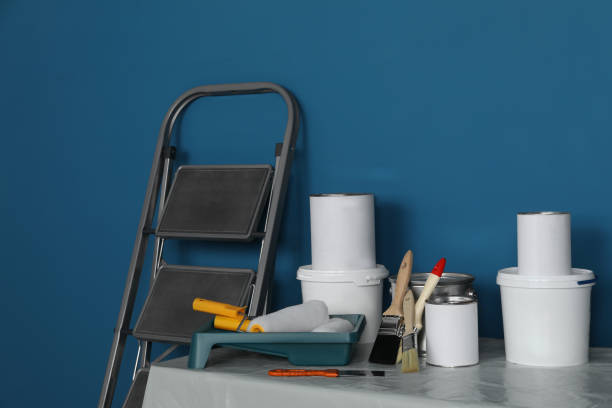Keeping Surfactant Leaching At Bay: Tips From Conshohocken's Local Painting Contractors
Surfactant leaching is a common problem encountered by homeowners and painting contractors alike. It occurs when water-soluble surfactants, which are added to paint to improve its flow and leveling properties, are drawn to the surface of the paint film by moisture. This can result in unsightly brown stains or streaks on the painted surface, which can be difficult to remove. To prevent surfactant leaching, it is important to choose the right paint, properly prepare the surface, and apply the paint correctly.
In this article, we will discuss tips from local painting contractors in Conshohocken, Pennsylvania, on how to keep surfactant leaching at bay. These professionals have years of experience in the industry and have encountered surfactant leaching in a variety of situations. By following their tips and advice, homeowners and contractors can avoid the headaches and costs associated with this common problem and ensure a beautiful, long-lasting paint job.
Understanding Surfactant Leaching
The phenomenon of surfactant migration from paint films to the surface during the curing process, resulting in the formation of a sticky, soapy residue, has been widely studied in the field of coatings technology. Surfactants are added to paint formulations to reduce surface tension, aid in pigment dispersion, and improve wetting and adhesion. However, when the paint dries, the surfactants can leach to the surface, creating an unsightly, sticky film that can attract dirt and other contaminants.
Surfactant leaching is most commonly observed in water-based paints, especially under certain environmental conditions such as high humidity and low temperatures. The problem can also be exacerbated by over-application of paint, inadequate drying time between coats, or incorrect paint formulation. Preventing surfactant leaching requires careful attention to the paint formulation and application process, as well as proper drying conditions.

Choosing the Right Paint
Selecting the appropriate type of paint is crucial in preventing the occurrence of unwanted surfactant leaching during the application process. There are several factors to consider in choosing the right paint, such as the substrate, the location, and the environmental conditions. The substrate refers to the surface that will be painted, and it can be made of different materials, such as wood, metal, concrete, or plaster. Each substrate may require a specific type of paint that is compatible with its properties, such as its porosity, texture, and flexibility. For example, a wood substrate may need a paint that can resist moisture and mildew, while a metal substrate may require a paint that can withstand corrosion and rust.
In addition to the substrate, the location and the environmental conditions can also influence the choice of paint. For instance, a paint that is suitable for interior walls may not be appropriate for exterior surfaces that are exposed to sunlight, rain, and wind. Similarly, a paint that is designed for dry climates may not work well in humid or rainy areas. Therefore, it is important to consult with a professional painting contractor who can advise on the best type of paint for a particular project, based on their experience and knowledge of the local conditions. By choosing the right paint, one can minimize the risk of surfactant leaching and ensure a durable and attractive finish.
Proper Surface Preparation
A critical step in achieving a smooth and long-lasting paint finish is proper surface preparation, which involves removing any dirt, debris, and old paint from the substrate, sanding the surface to create a rough texture for better adhesion, and priming the surface to seal any imperfections and provide a uniform base for the paint. Skipping this step can lead to premature paint failure, where the paint starts peeling or flaking off due to poor adhesion or underlying issues that are not addressed.
Before painting, the surface should be cleaned thoroughly using a mixture of water and mild detergent, followed by rinsing with clean water and allowing enough time for it to dry completely. Any loose or flaking paint should be scraped off, and the surface should be sanded using a fine-grit sandpaper to create a smooth, even texture. After sanding, any dust or debris should be removed using a clean cloth or vacuum cleaner. Finally, a coat of primer should be applied to the surface to ensure that the paint adheres well and provides a uniform finish. Proper surface preparation is essential for achieving a high-quality, long-lasting paint job that can withstand the elements and maintain its appearance for years to come.
Correct Application Techniques
Achieving a flawless and professional paint finish requires the correct application techniques, which can significantly impact the final outcome of a painting project. One important factor to consider is the type of paint applicator to use. For instance, brushes are ideal for painting trim and narrow areas, while rollers are perfect for covering large surface areas quickly. On the other hand, spray guns are best for achieving a smooth and even finish on large projects, but they require a level of skill and experience to operate. It's important to choose the right applicator for the job to ensure the paint is applied evenly and efficiently.
Another crucial aspect of correct application is the thickness of the paint coat. Applying a paint coat that is too thin can result in a patchy and uneven finish, while applying a coat that is too thick can lead to drips, runs, and an unattractive appearance. It's essential to follow the manufacturer's instructions regarding the number of coats to apply and the drying time between coats. Also, it's essential to apply the paint in a consistent manner, using long, even strokes to prevent lap marks and ensure a uniform finish. Proper application techniques can help minimize surfactant leaching, resulting in a beautiful and long-lasting paint finish.

Maintenance and Prevention
Maintaining a high-quality paint finish requires implementing preventative measures and regularly inspecting the painted surface for any signs of wear or damage. One of the most common issues that can compromise the longevity of a painted surface is surfactant leaching. This occurs when the paint's surfactants rise to the surface and form a film that can appear as a white, soapy residue. To prevent surfactant leaching, it is important to ensure that the surface is properly cleaned and prepared before painting. This includes removing any contaminants, such as dirt or grease, and allowing the surface to dry completely before applying the paint.
Regular maintenance is also crucial in preventing surfactant leaching. This involves cleaning the painted surface with a mild detergent and warm water solution at least once a year. It is important to avoid using harsh cleaning agents or abrasive materials, as these can damage the paint finish and increase the risk of surfactant leaching. Additionally, it is recommended to inspect the painted surface regularly for any signs of wear or damage, such as peeling or cracking. Addressing any issues promptly can prevent further damage and prolong the life of the paint finish. By implementing preventative measures and regular maintenance, homeowners can keep surfactant leaching at bay and ensure that their painted surfaces maintain their quality and appearance for years to come.
Conclusion
Surfactant leaching is a common problem that occurs when a painted surface develops a waxy or soapy residue. This issue can significantly affect the appearance and durability of a paint job. However, by following the tips provided by local painting contractors in Conshohocken, it is possible to keep surfactant leaching at bay.
One of the key factors in preventing surfactant leaching is choosing the right type of paint. High-quality paints that are specifically designed to resist leaching can be used to prevent this issue. Additionally, proper surface preparation, correct application techniques, and regular maintenance can also help to prevent surfactant leaching. By following these tips, homeowners can ensure that their painted surfaces remain beautiful and durable for years to come.
If you're looking for more ideas about this topic, feel free to read this blog post from Patch and Paint Pros.

